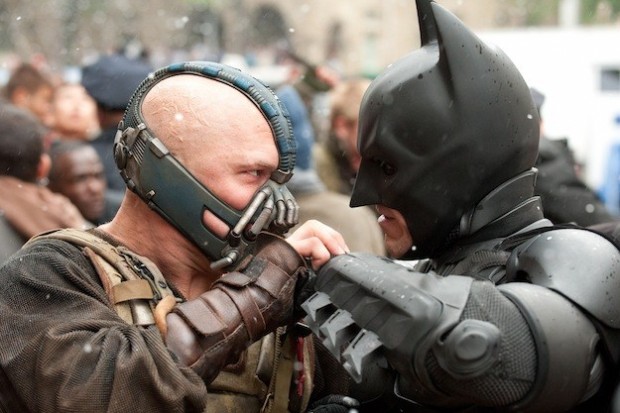‘Dark Knight Rises’ – Midnight, shootings and reaction
-
 It’s difficult to reflect on the experience of seeing “The Dark Knight Trilogy” Thursday night in the AMC Theaters at Spokane’s River Park Square without pausing to acknowledge the tragic shooting that happened at a screening in Colorado.
It’s difficult to reflect on the experience of seeing “The Dark Knight Trilogy” Thursday night in the AMC Theaters at Spokane’s River Park Square without pausing to acknowledge the tragic shooting that happened at a screening in Colorado.As an unsettling footnote, a plastic burning odor resulted in the complete evacuation of River Park Square around the same time as the Colorado incident. Thankfully our evacuation was the result of an overheated AC unit and not something unspeakable.
Listening to the news the next morning nearly eliminated my desire to talk about “The Dark Knight Rises” experience. But you hug your kid, get dressed and be thankful you even get to discuss the strengths and shortcomings of a superhero movie. Some people don’t get to do that today.
In terms of scale, Nolan has outdone himself with “The Dark Knight Rises.” Whereas Batman fought individual villains in previous films, this time he’s faced with the full-on Occupation of an entire city. This is no mere superhero movie; Nolan has much more on his mind about class inequality and the nature of authority in our post 9/11 society.
“Rises” opens eight years after the events of “The Dark Knight.” Batman is in exile, having taken the fall for murders committed by former Gotham City savior, Harvey Dent. Bruce Wayne hides in his mansion, still emotionally and physically crippled by his battles with Joker and Two-Face.
A hulking terrorist in the form of Bane (Tom Hardy) forces him back in action, as does an encounter with crafty cat burglar Selina Kyle (Anne Hathaway). Saying much more about the plot of this 2 hour and 45 minute epic would be to spoil the massive scope of “Dark Knight Rises.” It’s easily the biggest movie this summer, making that alien invasion at the end of “The Avengers” seem like a minor skirmish.
The movie does a lot of things right – notably introducing new characters to the universe without their arcs feeling too rushed or out of place. Joseph Gordon-Levitt as a young Gotham City police detective and Hathaway as the allegiance-shifting Catwoman are the film’s major standouts. The regulars from the trilogy – Bale, Michael Caine, Gary Oldman and Morgan Freeman – all give strong performances, but the sheer size of the plot mechanics force them all, Bale included, into long stretches of absence.
Hardy is convincing as the masked and muzzled Bane, but the character pales in comparison to The Joker (probably not a fair comparison). It doesn’t help that his mask removes all personality from the versatile actor’s face, or that his obviously manipulated-in-post-production voice never really gels with the action on screen.
“Dark Knight Rises” has a wild, tension-soaked final act. But for the first time in his career, Nolan seems overwhelmed by his material. There’s too much going on, too many character arcs to satisfy and too much effort into wrapping all the films into a cohesive trilogy. There’s a satisfying conclusion, but the tonal cohesiveness of “The Dark Knight” is missed in “Rises.”
Even if it doesn’t quite hold together, credit must be given to Nolan and his team for attempting something so expansive. There’s a lot of social commentary here, and unlike what some pundits might be babbling about on talk radio, the movie doesn’t take a simple left or right stance.
Most unsettling is how “The Dark Knight Rises” is about the kind of terror that struck a theater in Colorado early Friday morning. As Alfred so succinctly says it in “The Dark Knight,” some people “just want to watch the world burn.”
“Dark Knight Rises” is a response to that kind of thinking, and maybe in between the Bat cycle chases and flying contraptions, there’s a definitive answer in there.
Complete Trilogy experience can be found in the original Coeur d’Alene Press article HERE